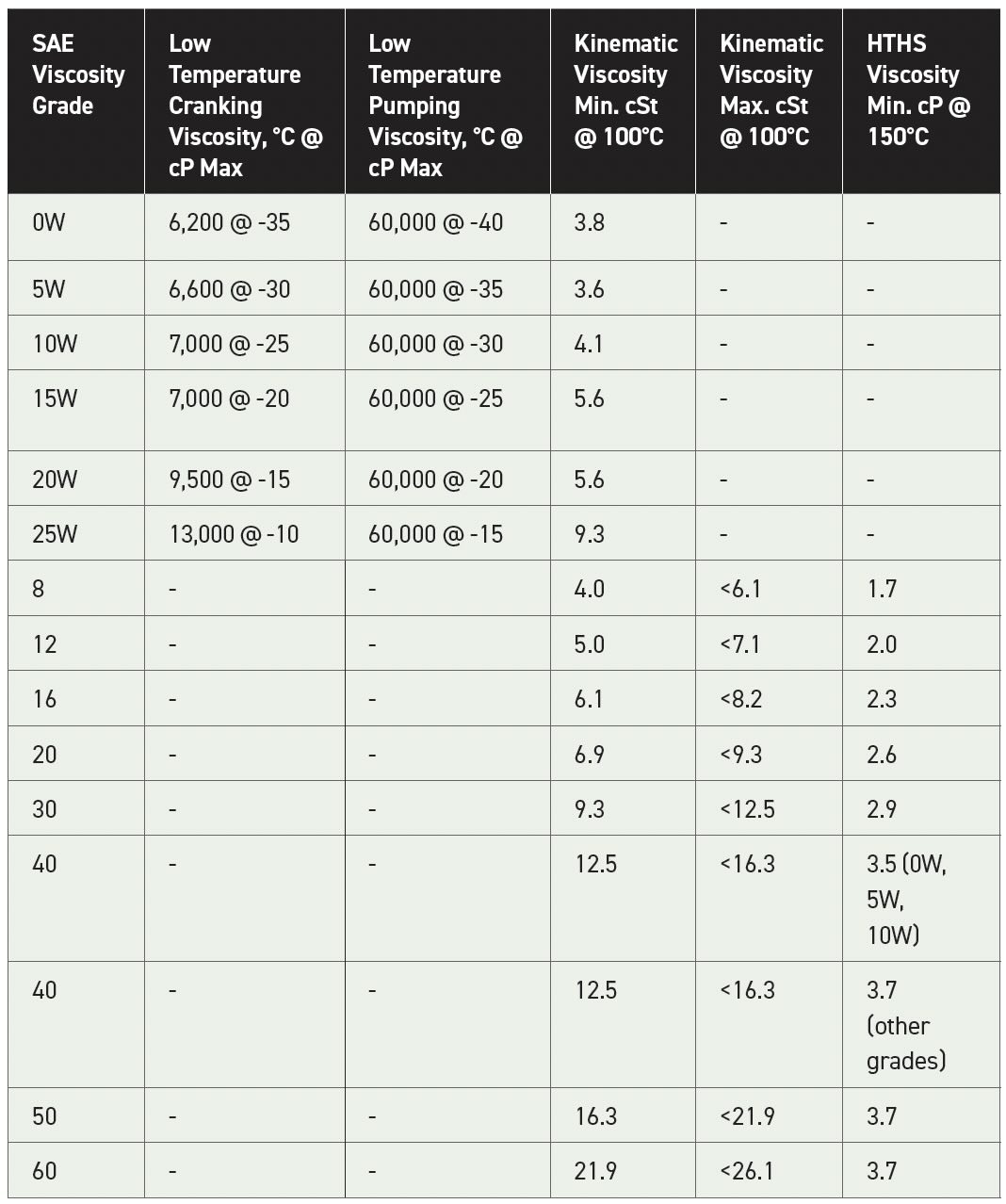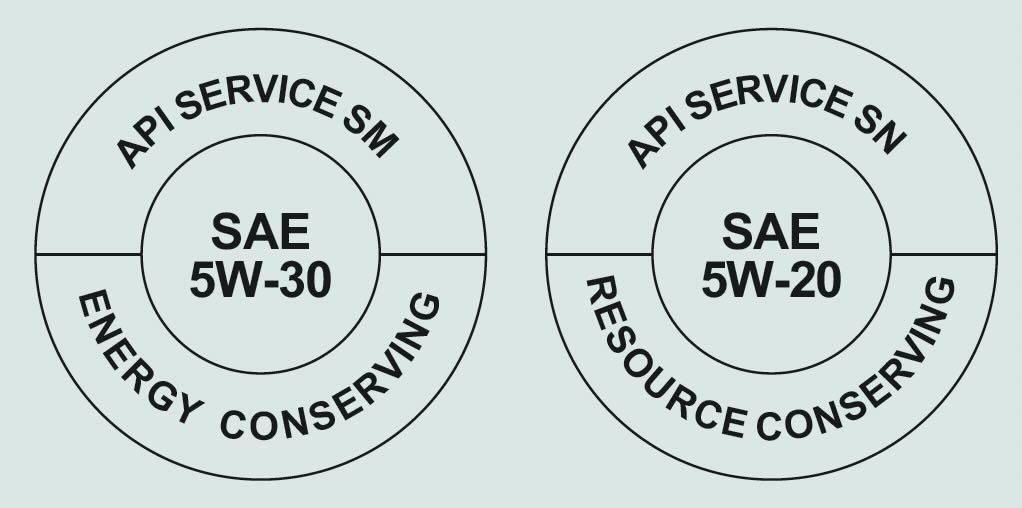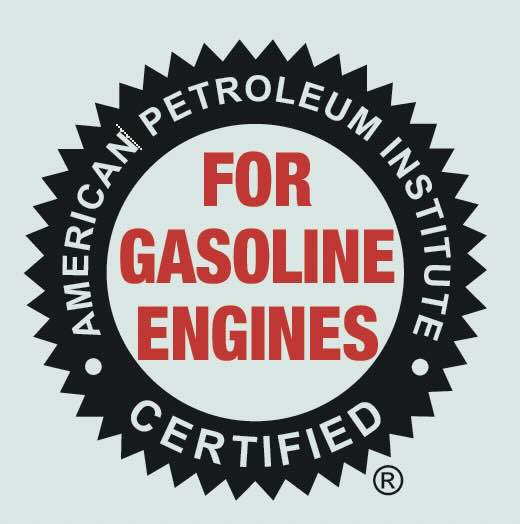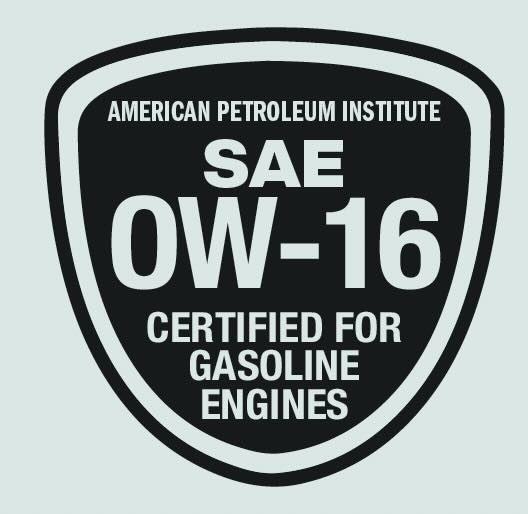Automotive engine oil specifications
By Dan Holdmeyer, Contributing Editor | TLT Lubrication Fundamentals August 2024
Oil grades are defined by global organizations, country-specific bodies and even individual OEM engine oil specifications.

The automotive industry requires a plethora of lubricant physical, chemical and performance tests to qualify lubricants for use in its engines. Fortunately, automotive drivers don’t need to know all the tests and results required to determine what oil is okay to use in their engines. They do need to know a bit about engine oil certifications, which can be a bit confusing for the average driver.
Many drivers know to look for the correct SAE International (formerly Society of Automotive Engineers) viscosity grade; however, they often wonder and ask if they can use a higher or lower SAE grade oil. The answer is not a simple yes or no, so let’s look at the issues with deviating from the recommended SAE grade oil.
As we’ve discussed in past TLT Lubrication Fundamentals articles, viscosity is the most important characteristic of the lubricant. SAE established the SAE J300 Standard for automotive engine oils from which engine OEMs around the world choose the optimum grades for their specific engine design (see Table 1).
Table 1. SAE J300 Standard

There are currently eight “high temperature” SAE viscosity grades (8, 12, 16, 20, 30, 40, 50 and 60) defined by a minimum viscosity at 100ºC and a minimum high/temperature high shear (HTHS) viscosity. These grades assure a lubricant film at the engine operating temperature even under high shearing conditions in the engine where wear protection is most needed. The OEM design engineers consider the loads, speeds, temperatures and surface conditions for critical engine components when they choose the recommended SAE grade.
Engines operating in extreme heat, or under heavy load, may benefit from a higher SAE grade under these abnormal conditions. I would not recommend using a lower viscosity grade than the OEM recommended SAE grade.
Currently there are six “low temperature” SAE xW viscosity grades, where the “W” stands for winter (0W, 5W, 10W, 15W, 20W and 25W). SAE set maximum viscosities at low temperatures, or “startup” temperatures. The “low temperature cranking viscosity” maximum gives the battery and starter a chance to start the engine in cold winter climates. Even more critical, in my mind, is the “low temperature pumping viscosity.” This ensures the oil can be pumped throughout the engine quickly when the engine is started in cold climates. If oil is not circulated through the running engine, it will quickly seize up. Using a higher SAE “W” viscosity grade could cause great harm if the oil cannot flow through the engine in cold climates. If startup temperatures are expected to be extremely low, a lower SAE “W” grade could be used so long as the operating temperature SAE grade is maintained.
You may have noticed the maximum low temperature pumping viscosity numbers are much higher than the cold cranking viscosity numbers. That is because the low temperature cranking test is under stress or shear, whereas the low temperature pumping test is under no yield stress. However, the temperatures for measuring the pumping test results are always 5ºC below the measuring temperature of the cranking test.
Around the world, multigrade oils will list both a low temperature and high temperature viscosity grade, such as SAE 5W- 20 or SAE 15W-40. The SAE grade can be found in the middle of the American Petroleum Institute (API) Service Symbol, or “donut” (see Figure 1).

Figure 1. API Service Symbol, “donut.”
We discussed multigrade and high viscosity index oils in more detail in the March 2023 TLT Lubrication Fundamentals article titled “Viscosity index and classifications.”
Also in Figure 1, the upper half of the symbol lists the API Service Performance Category, the primary U.S. standard for identifying engine oil quality. The standard consists of three letter categories: S, C and F. “S” is for service vehicles or gasoline engines. “C” is for commercial vehicles or diesel engines. Another way of remembering the categories is to think of “S” as for spark ignited gasoline engines and the “C” is for combustion ignited diesel engines.
The second letter in the API Service Performance Category indicates the level of performance. The letter “A” is the first level of performance within the category. The performance level increases with each subsequent letter in the alphabet and is backward compatible with the previous API “S” Category performance level. So, API Service SN has a higher performance level than API Service SM and is considered backward compatible. In other words, an API SN oil can be used in an engine requiring API SM. API Service SP was introduced in 2020 and is the most current performance category for gasoline engines in the U.S. API SN, or any of its predecessors, should not be used in an engine calling for API SP.
API SA for gasoline engines around 1930 was not much more than a good quality base oil. API SB, SC, SD and SE all superseded SA, consecutively. These are all obsolete categories that could cause significant harm to today’s engine. API Service SF, SG and SH are obsolete as well. API SJ was introduced in 1996 and is still an active category, as is SL, SM, SN and SN Plus, so these may be listed on a can of oil that meets API SP, so the end-user might feel more comfortable using an API SP oil in an engine calling for an API SN or older performance level. (SI, SK and SO were not used due to common associations with other organizations or systems.)
The International Lubricant Specification Advisory Committee (ILSAC) was formed in 1992 as a part of API with members from vehicle and engine OEMs (including Japanese OEMs), oil and additive companies, as well as industry associations, including ATSM International, SAE as well as API. In 1993, ILSAC came out with their GF-1 specification related to API specification performance level API SH. Each subsequent GF specification is backward compatible with the previous GF specification(s). Fuel economy is the main differentiating criteria for the ILSAC versus API specifications and only certain viscosity grades are allowed.
The current ILSAC specification GF-6 is split into two categories that also fit in the current API SP Service Category. Both GF-6 specifications are backward compatible with GF-5, which falls within the API SN Service Category. Introduced in May 2020, GF-6 was among other performance criteria designed to protect against low-speed pre-ignition (LSPI), timing chain wear protection, deposit control on pistons and turbochargers, more stringent sludge and varnish control, improved fuel economy and engine protection while burning ethanol-containing fuels up to E85.
GF-6A certified oils are limited to SAE 0W-20, SAE 0W-30, SAE 5W-20, SAE 5W-30 and SAE 10W-30 to be allowed to display the ILSAC starburst symbol (see Figure 2).

Figure 2. ILSAC starburst symbol.
GF-6B only allows SAE 0W-16 to earn the new shield symbol (see Figure 3).

Figure 3. ILSAC GF-6B shield symbol.
For diesel engines, API C Service Performance Category closely matches the nomenclature protocol. The API C Category officially started in 1970 starting with API CD that also replaced a previous “DS” Category from 1955. Subsequent performance levels CE, CF-4, CG-4, CH- 4, CI-4, CI-4+, CJ-4 and the current API CK-4 supersede all of its predecessor performance level requirements of four-stroke diesel engines. The performance improvements in control of deposits, wear, oxidation, soot agglomeration, etc., were common improvements in each level. The later performance levels also had requirements for dealing with biodiesel, lower sulfur fuels and after-engine emission equipment protection. The catalytic converters limited the chemistry, particularly metallic additives allowed in the oil that may “poison” the catalytic converters. (This is like what applied to API S Categories many years earlier when lead was removed from the gasoline at the time and when catalytic converters were introduced to passenger cars.)

API did have a period of time (roughly 1980 to 2010) when separate API C Category performance levels for two-stroke diesel engines, API CD-II and API CF-2, were active. Due to emissions requirements, the on-highway two-stroke diesel engine has been almost completely eliminated. These levels were not backward compatible with other API C Categories and are obsolete, as are API CG-4 and earlier levels.
The API “F” Category was introduced in 2017 for certain diesel engines designed to meet on-highway emission standards. API FA-4 is not backward compatible with any API C Categories. The category is not recommended for off-highway diesel engines. To help reduce greenhouse gas (GHG) emissions, API FA-4 oils must have an HTHS viscosity range of 2.9 cP- 3.2 cP, which may be too low for engines requiring API CK-4, and its predecessors, performance levels.
Those are the primary U.S. automotive engine oils standards. Countries in the rest of the world also have industry organizations that set standards for their part of the world.
The European Automobile Manufacturers’ Association (ACEA, or to understand the acronym, Association des Constructeurs Européens d’Automobiles) has its “A/B,” “C,” “D” and “E” sequences for gasoline and diesel engines.
The Japan Automotive Standards Organization (JASO) Engine Oil Standards define performance levels for two-stroke gasoline engine, four-stroke gasoline motor cycle and automotive diesel engine oils.
In addition to the industry standards used in various parts of the world, the engine OEMs also may have performance level specifications for their engines or even for specific engine series within their product line.
As you can see, we’ve only mostly covered U.S. automotive engine oil specifications. There are a myriad of additional specifications from around the globe and even more specific engine OEM specifications, too numerous to cover in one Lubrications Fundamentals article.
Dan Holdmeyer is retired from Chevron Lubricants and is based in Washington, Mo. You can reach him at dan.holdmeyer@gmail.com.